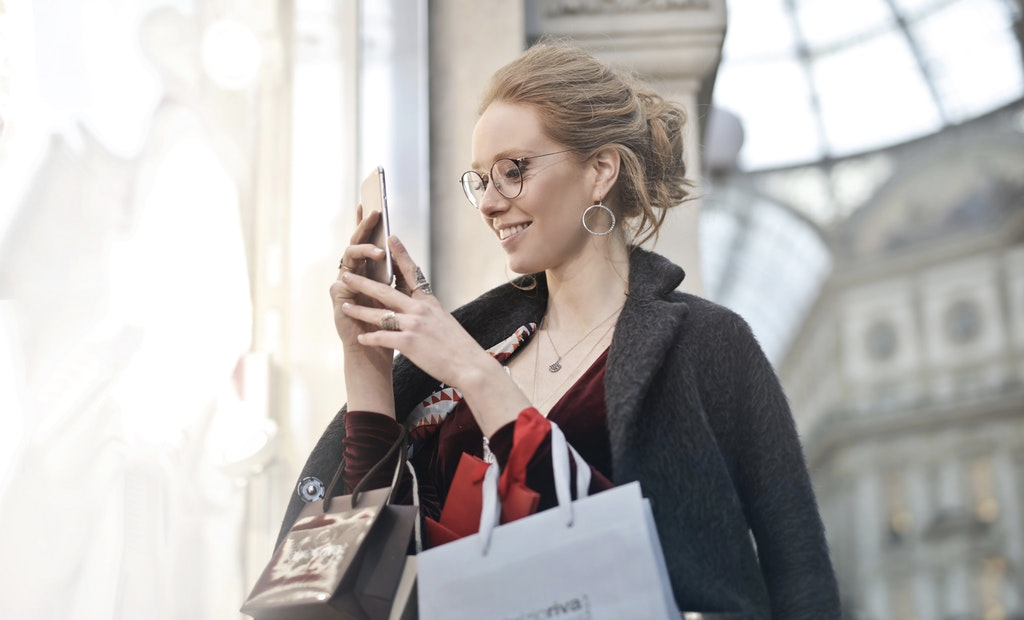Could social media save high street retailers?

We all know that the internet has led brick-and-mortar stores to overhaul the way they approach retail both in-store and online, but there are still a vast number of retailers who seem to have missed the message. Nearly half of small businesses have no website, a move which reduces a brand’s overall visibility and has been proven to impede growth by around 40 per cent.
Yet, whilst a strong online presence – whether through a website or a Google account, which displays a business’s contact details and opening hours in search results – is a boon, it is actually social media which drives the most conversions. A recent PwC survey showed that social networks are the top “source of inspiration for purchases”. So, in the face of decreasing footfall on the high street, and fierce competition from e-commerce, could social media bring a new lease of life to real-world shopping?
Social media advertising has spearheaded “click and mortar” retail
It has been predicted that social media advertising spend is set to increase by 40% by the end of the decade, and whilst brand Twitter accounts have been great at “getting numbers” from ad hoc tweets, companies are getting better at integrating social media into wider campaigns. As Retail & Asset Solutions note, merchandising of any kind requires “meticulous planning prior to the commencement date for any project”, and this is just as applicable to social media campaigns. For example, graphic design and content scheduling will all need to be done far in advance, and in collaboration with the marketing team, who can coordinate their visual merchandising work to reflect a wider campaign.
This business model is known as “click and mortar” retail, where online channels serve to enhance the in-store experience. Many in the business have noted that customers are “prepared to pay more to have that personal experience and good conversation” in retail outlets; however social media is driving footfall more than ever, with 71% of satisfied customers more likely to recommend brands to others based on their Twitter or Facebook experiences. Social media also gives brands the opportunity to extend offers to their followers which can be claimed in-store, which not only rewards online loy`alty but encourages users to visit the physical store as well. With platforms like Facebook having with 2.74 billion monthly active users, the audience a brand could gain.
Instagram has revolutionised retail design
Of course, whilst Twitter and Facebook are ideal for brands who want to interact directly with their customers, it is Instagram that is bringing the retailers’ most visually appealing elements to a wider audience. From social media influencers to unique in-store designs waiting to be shared, retail design agencies are now creating visual merchandising campaigns with Instagram very much in mind, hashtags and all.
This is beneficial for brands in a number of ways; by encouraging customers to use suggested hashtags—which are often prominently displayed as part of in-store displays—they will actively encourage the curiosity of Instagram users who may not recognise the meaning of the hashtag. These users will then click on the hashtag to explore it further, and potentially be encouraged to visit the store to see the display for themselves. Similarly, turning on the location data for a brand’s social media (and encouraging customers to check in when they post from the store) build what one business owner described to the Telegraph as “a real sense of community”.
However, the popularity of Instagram within the retail sector has, to some degree, become a double-edged sword with the inevitable advent of Instagram Shopping, which integrates e-commerce into the social media app itself. Whilst one retailer has claimed that this feature “has allowed [retailers] to differentiate between the posts that get a lot of likes vs actually driving sales”, it remains to be seen whether this will also impact the way these same products are displayed in-store. Either way, thanks to social media, brand awareness has never been higher, and the age of click and mortar retail might just be what saves the high street.
The editorial unit

























Facebook
Twitter
Instagram
YouTube
RSS